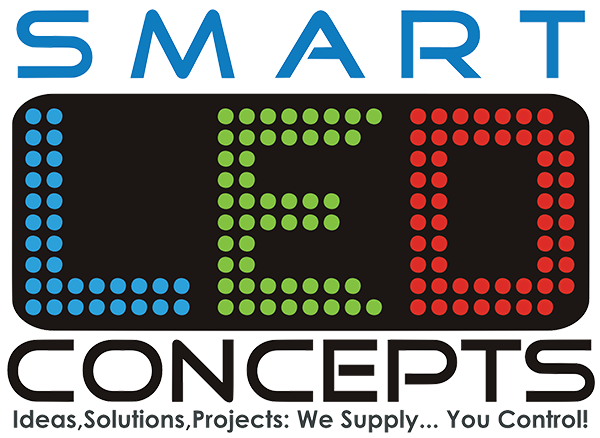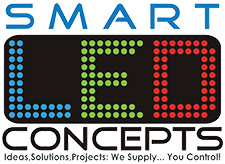Understanding the language of LED Lights
Watts
A Watt is the amount of energy used to operate a device. In this case, an LED light. When reading that a 7 watt LED light produces the same light output as a 50-watt incandescent light it refers to the amount of power that it takes to produce that light. The lower the wattage the lower your electric bill. Utility companies normally charge per kilowatt-hour. How may 1000 watts are used up within an hour. The lower the k/w hour the lower your bill, with the case LED lights your bill can be 5 to ten times lower.
Lumens
Sometimes people get lumens and watts confused. Lumen (lm) is the measurement of brightness as perceived to the human eye. You must look at lumens and watts to determine the right light for your situation. The higher the lumen output is, the brighter your light will be.
Footcandle
Like horsepower, the term footcandle is a comes from an era where measurement had a practical base. Footcandle refers to the amount of light that appears on a surface from one foot (12 inches) by a candle. The term is still used but not as practical measurement anymore.
Efficacy
Luminous efficacy is a measure of how well a light source produces visible light. It is measured by calculating the lumen output by the number of watts.
SI
International System of Units – the system originated in France ( Système international ) SI is the modern form of the metric system in which components are measured. Wikipedia states https://en.wikipedia.org/wiki/International_System_of_Units That SI is built on seven base units, which are the second, metre, kilogram, ampere, kelvin, mole, candela, and a set of twenty prefixes to the unit names and unit symbols that may be used when specifying multiples and fractions of the units. The system also specifies names for 22 derived units, such as lumen and watt, for other common physical quantities.
Volt
Voltage is an electrical potential difference, the difference in electric potential between two places. The unit for electrical potential difference, or voltage, is the volt. The volt is named in memory of Alessandro Volta. One volt equals one joule per coulomb.
Amp or Ampere
Ampere or Amp is a base unit of electric current used by the SI
AC
Not air conditioning in this case – although switching to LED lights can save you on your K/W hours ( above ) and save you some $$. AC here refers to alternating current. This is the most common form of electricity used in commercial and private property. AC id different in different countries but the most common direct line volt in the USA is 90 v- 220v; 110 v is most common.
DC
Direct current. Most LED tape lights are DC although line voltage strip is becoming more popular. Low voltage DC strip uses a transformer or a low voltage battery to step down the AC voltage to a useable level. Low voltage LED strip lights are 12 v or 24 volt DC.
ACDC
An awesome Australian rock band.
CRI
Color Rendering Index. This is the measurement of how an object appears under certain light conditions. Below 5000k a CRI score is measured against how an object would appear under an incandescent/halogen bulb. The CRI is an extremely important mentic to consider when choosing LED lights, consider a red apple under different light sources – the right light can make this apple appealing or unappealing. For a deeper look at CRI and what it means to your lighting plan please check out our post on it https://smartledconcepts.com/cri/
Pixel Pitch
The distance between pixels on an LED screen. The closer you are to the screen the lower the pixel pitch needs to be. For example, if you are placing a large LED screen in a restaurant and the average customer is 8 to 10 feet from the screen you would choose a screen with a pixel pitch of P2.5 or similar. If however, you were placing your LED billboard 100 ft from people you could have a much hight pixel pitch – P10 or higher.
LED Pitch
Similar to pixel pitch on LED screens, LED pitch refers to the distance between the individual chips on a strip. It is very important to understand the meaning that pixel pitch has to your lighting goals. Shadowing and spotting are issues that can be associated with long pixel pitch LED strip. The shorter the pitch the more uniform that the light tends to be.
Binning
I have talked about buying extra led bulbs when installing lights on projects. LED Binning is the reason why. It is the process of grouping LEDs during production so that they match with the LEDs of the same color sector. Therefore it is really important for consistency and color that LEDs are always ordered from the same bin.
Kelvin
People often refer to the temperature of light. This can cause some initial confusion as it’s not how hot or cold light is to touch but how hot or cold it looks. The light temperature operates in a range of 1800k to 7000k. Just to confuse matters a little more the lower the Kelvin the warmer the light appears. Think about the glow from a match to cool blue light and everything in between
CCT
Correlated Color Temperature. Not all white light appears the same. CCT defines the color appearance of white light, it is measured in degrees of Kelvin (see above) How you want your space to look will be greatly affected by the CCT. Functional vs cozy. Choose wisely.
5050, 3528, 3014 etc.
You will see these numbers a lot when researching an LED strip. They simply are measurements of the chip on the strip. Not all chips are the same size, the four digits represent the size of the chips in millimeters. for example, 3014 refers to 3.0mm chip * 1.4 mm chip
Photometrics
Photometry is the science of the measurement of light, in terms of its perceived brightness to the human eye. It is distinct from radiometry, which is the science of measurement of radiant energy (including light) in terms of absolute power. A lot of commercial projects will require a footcandle reading and photometric to be performed to satisfy city and state requirements.
Licenced Low Voltage
If you are planning an LED light install, use a licensed low voltage contractor like Smart LED Concepts. We deal with everything from complex overarching LED systems to quick installs and everything in between. Working with insured specialists will make sure your project goes to plan.

- Cut energy consumption up to 80%
- Provide a brighter / higher quality light
- Cut down maintenance Costs
- Expected ROI between (1.5 – 3 years)
- 5 Year Warranty
Want to attract more business?
Smart LED Concepts will work with your contractors and designers to create and illuminate custom lighting that will make your business shine.
Because Smart LED Concepts used LED fixtures in the venue, the running and maintenance cost is 70% less than venues that use traditional lighting methods.
Categories: Blog, Business, Commercial LED, Commercial Lighting, Electric, going green, Restaurant LightingDecember 18, 2018Share this post
Related posts
A Guide to Great Landscaping Lighting
September 30, 2019LED Lighting Design Tips.
September 27, 2019Exterior LED Lights for Hotels
September 27, 2019Let’s talk about Flex…
September 24, 2019LED vs CFL
September 23, 2019Value Engineering & LED Lights
September 20, 2019NEWS & EVENTS
- A Guide to Great Landscaping Lighting
September 30, 2019 - LED Lighting Design Tips.
September 27, 2019 - Exterior LED Lights for Hotels
September 27, 2019 - Let’s talk about Flex…
September 24, 2019
Categories: Blog, Business, Commercial LED, Commercial Lighting, Electric, LED Commercial lighting, LED Concepts, LED Design Products, LED DESIGNS, LED DISPLAYS, LED Lighting, Lighting, NEWS, Portfolio, Products, Residential, Restaurant Lighting, UncategorizedOctober 11,



